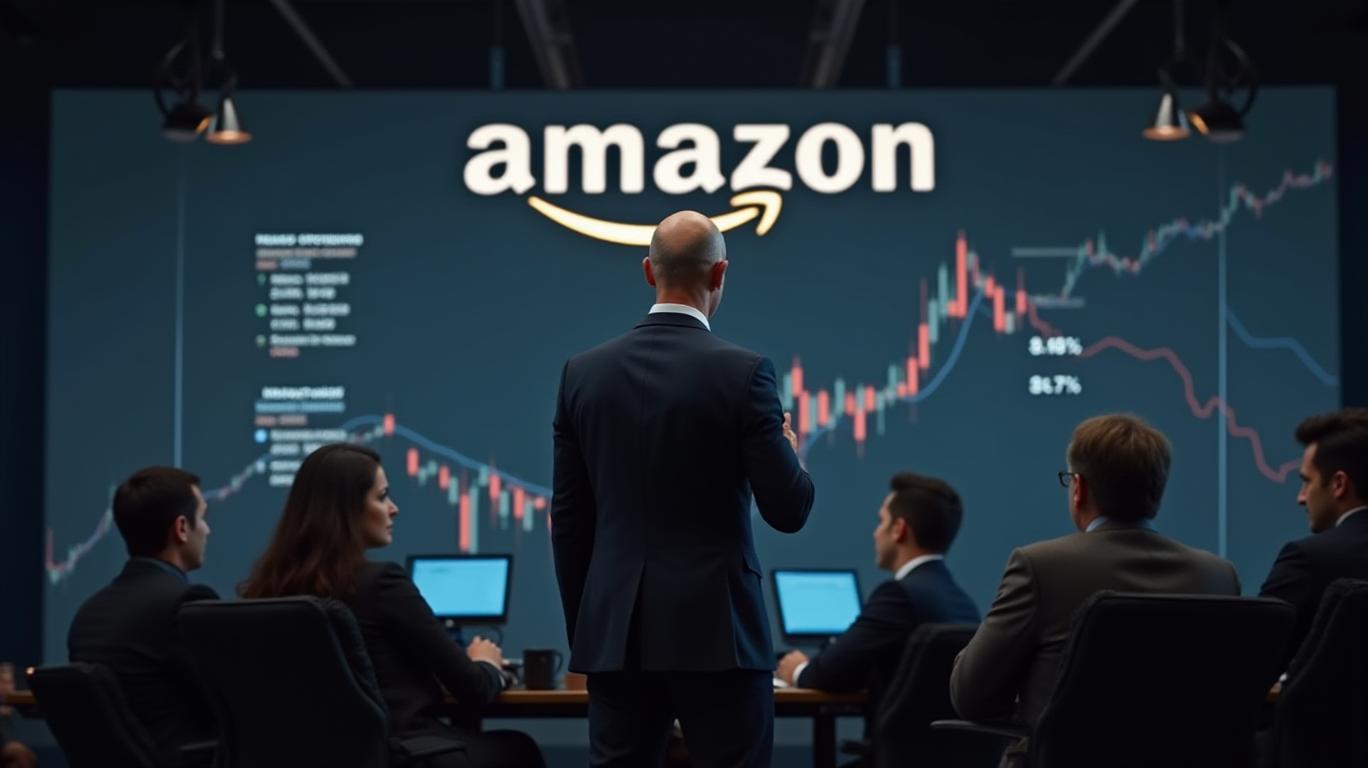Amazon's Tariff Transparency Clash: A Strategic Gamble or Regulatory Minefield?
The White House’s recent denunciation of Amazon’s reported plan to disclose the cost of U.S. tariffs on product listings has ignited a high-stakes debate over corporate transparency, political influence, and the economic consequences of protectionism. As tariffs imposed under the Trump administration continue to reshape global trade dynamics, Amazon’s alleged transparency initiative—framed by the White House as a “hostile and political act”—has become a flashpoint in the broader battle over who bears the cost of America’s trade war.

The Tariff Transparency Controversy
The White House, led by Press Secretary Karoline Leavitt, has aggressively criticized Amazon’s reported move to label the specific cost of Trump-era tariffs on product pages. Leavitt accused the company of bias, arguing the initiative unfairly targets the administration’s policies while ignoring the Biden-era inflation spike. She further alleged amazon had “partnered with a Chinese propaganda arm,” framing the move as an affront to U.S. sovereignty.
Amazon has not officially confirmed the plan, but third-party reports suggest it aims to highlight how tariffs—particularly the 145% levy on Chinese imports—inflate consumer prices. This disclosure could expose the economic trade-offs of protectionism, as tariffs have already triggered retaliatory measures from China (125% tariffs on U.S. goods) and strained global supply chains.
Market reactions underscore the tension: Amazon’s shares fell over 2% on news of the plan, reflecting investor anxiety over regulatory backlash. Analysts warn that prolonged trade conflicts could further disrupt supply chains, with ports anticipating reduced cargo traffic due to tariff-driven uncertainty.
Context of the Trade War
The tariffs at issue, imposed under a national emergency declaration, were justified as reciprocal measures to address non-reciprocal trade practices. However, critics argue they lack economic rationale, citing nonsensical targets like a population-free island and disproportionate impacts on U.S. allies. The International Emergency Economic Powers Act, invoked to justify these tariffs, has become a tool for aggressive trade policy, raising concerns about overreach.
For Amazon, the stakes are particularly high. Over 60% of its sales come from third-party sellers reliant on Chinese imports. As tariffs soar, these sellers face a stark choice: raise prices, reduce profit margins, or pivot to less-tariffed suppliers. CEO Andy Jassy acknowledged this dilemma, predicting that sellers would eventually pass costs to consumers despite Amazon’s efforts to mitigate impacts through inventory strategies.
Amazon’s Position and Strategy
While Amazon has not publicly endorsed the transparency plan, industry trends suggest it may be compelled to act. Competitors like Temu and Shein have already implemented similar measures, adding “import charges” to product pages to reflect tariff costs. By following suit, Amazon could differentiate itself as a transparent platform, aligning with consumer demand for clarity on pricing drivers.
However, the White House’s political framing poses risks. Leavitt’s accusations of Amazon’s alleged ties to Chinese entities—citing a 2021 Reuters report—aim to paint the company as an antagonist of U.S. economic interests. For investors, this raises questions about regulatory pushback and reputational damage.
The 60% figure underscores Amazon’s vulnerability. If sellers flee China-centric supply chains, the company’s revenue could suffer. Conversely, transparency might boost consumer trust, countering inflation-driven skepticism.
Market and Investor Reactions
Analysts emphasize the dual-edged nature of Amazon’s potential move. While the stock dip reflects immediate regulatory fears, long-term benefits could emerge if transparency fosters consumer loyalty. However, the broader trade war’s economic toll looms large: China’s retaliatory tariffs have already strained U.S. exporters, and further escalation could deepen supply chain bottlenecks.
Investors must also weigh geopolitical risks. The White House’s “buy American” rhetoric may pressure consumers and businesses to avoid tariff-laden imports, potentially shrinking Amazon’s inventory pool. Meanwhile, the administration’s defense of tariffs as a national security tool signals no retreat, leaving companies in a regulatory limbo.
Political and Regulatory Risks
The White House’s condemnation underscores a broader strategy to frame Amazon as a partisan actor. By alleging ties to Chinese interests, officials aim to delegitimize the transparency plan as foreign-backed mischief. For Amazon, navigating this minefield requires balancing consumer needs with political sensitivities—a tightrope walk in an era of heightened nationalism.
Conclusion
Amazon’s tariff transparency initiative, if implemented, represents both an opportunity and a risk. The 145% tariff on Chinese goods has already inflated consumer costs, and disclosure could empower buyers to make informed decisions—potentially boosting loyalty. Yet the White House’s aggressive pushback, coupled with tariff-driven supply chain strains, threatens to undermine these gains.
Investors should monitor three key metrics:
1. Amazon’s stock performance: A sustained decline post-disclosure would signal regulatory overhang (current 2% drop hints at investor wariness).
2. Third-party seller shifts: A mass migration away from Chinese imports would strain Amazon’s revenue base (60% of sales at risk).
3. Trade policy developments: Escalation of tariffs or retaliatory measures could amplify supply chain disruptions, further pressuring margins.
In the end, Amazon’s gamble hinges on whether transparency can outweigh political and economic headwinds. For now, the company’s silence—neither confirming nor denying the plan—suggests it is treading carefully in a high-risk game. The stakes? Nothing less than its role as a neutral arbiter in a fiercely partisan trade war.


_cbf77e8c1748017079428.jpeg)








